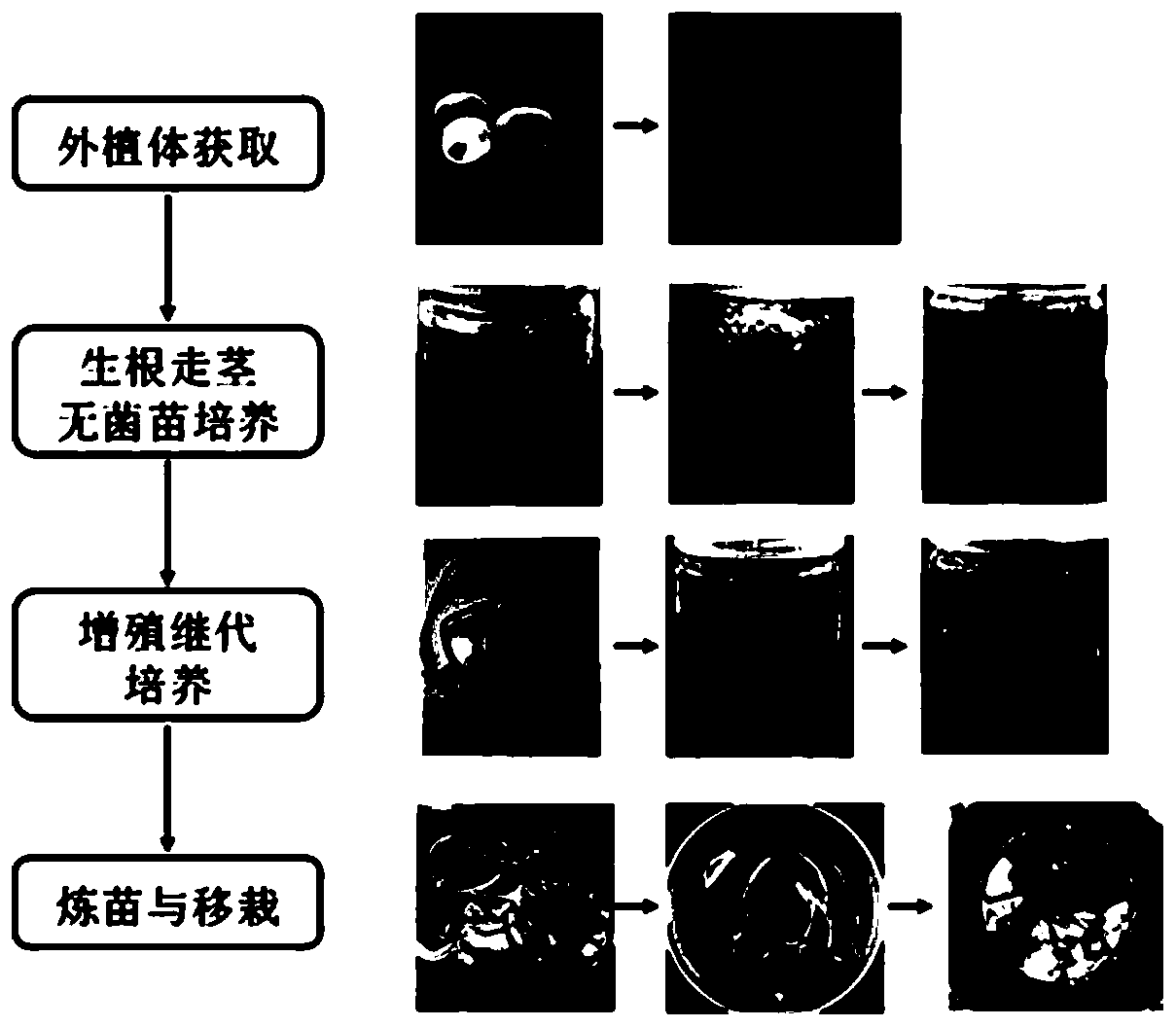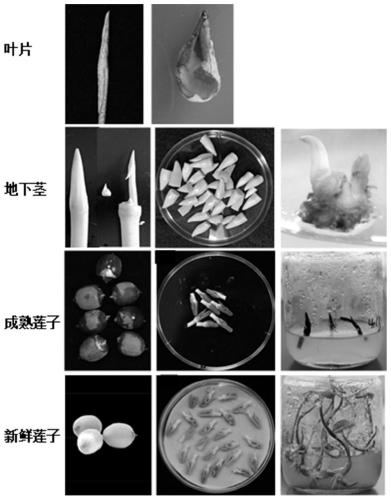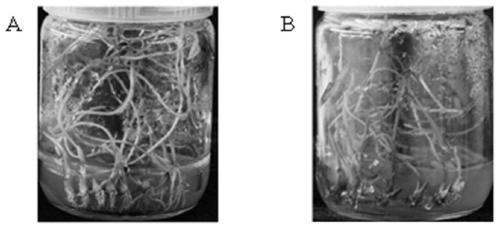Method for culturing and rapidly propagating tissue culture seedlings of lotus
A fast technology for tissue culture seedlings, applied in the field of plant tissue culture, can solve the problems of easy contamination of explants, low proliferation efficiency, and low survival rate, and achieve the effects of high survival rate, low pollution rate, and simple operation
- Summary
- Abstract
- Description
- Claims
- Application Information
AI Technical Summary
Problems solved by technology
Method used
Image
Examples
Embodiment 1
[0026] The screening of lotus tissue culture seedling explant is carried out as follows:
[0027] (1) The young leaves, terminal buds of underground stems, mature lotus seeds and fresh lotus seeds 15-18 days after pollination of 'Qiu Hongyang' were selected as explants to cultivate aseptic seedlings. Wherein the leaves (after removing the veins) and the terminal buds of the underground stems (after peeling off the sheaths) are directly sterilized, and the ripe lotus seeds and fresh lotus seeds are sterilized after removing the outer testa, and finally the germs are taken out with sterile scissors as explants. The sterilization method is as follows: sterilize with 75% ethanol for 30 seconds, rinse once with sterile water; then sterilize with 0.1% mercuric chloride for 8 minutes, and rinse with sterile water for 5 times.
[0028] (2) Under aseptic conditions, four kinds of lotus explants were inoculated in the aseptic seedling medium, the photoperiod was 16h / 8h (day / night), the ...
Embodiment 2
[0033] The optimization of the aseptic seedling medium of lotus tissue culture is carried out according to the following steps:
[0034] (1) Fresh lotus seeds picked 15-18 days after pollination in 'Qiu Hongyang' were taken, the outer testa was removed, rinsed with tap water for 15 minutes, and then transferred to a sterile workbench. Disinfect with 75% ethanol for 30 seconds and rinse with sterile water. Then disinfect with 0.1% mercury liter for 8 minutes and rinse with sterile water for 5 times. The embryos were finally removed as explants using sterile scissors.
[0035] (2) Under sterile conditions, inoculate lotus germs in sterile seedling medium with a photoperiod of 16h / 8h (day / night), light intensity of 2000Lx, and temperature control of 25±2°C. After 1 month of cultivation, the aseptic seedlings take root, and after 3 months of cultivation, the aseptic seedlings with rooted stems are obtained. The aseptic seedling medium has been designed with the following propor...
Embodiment 3
[0047] The optimization of the subculture medium of lotus tissue culture is carried out according to the following steps:
[0048] (1) Fresh lotus seeds picked 15-18 days after pollination in 'Qiu Hongyang' were taken, the outer testa was removed, rinsed with tap water for 15 minutes, and then transferred to a sterile workbench. Disinfect with 75% ethanol for 30 seconds and rinse with sterile water. Then disinfect with 0.1% mercury liter for 8 minutes and rinse with sterile water for 5 times. The embryos were finally removed as explants using sterile scissors.
[0049] (2) Under sterile conditions, inoculate lotus germs in sterile seedling medium with a photoperiod of 16h / 8h (day / night), light intensity of 2000Lx, and temperature control of 25±2°C. After 1 month of cultivation, the aseptic seedlings take root, and after 3 months of cultivation, the aseptic seedlings with rooted stems are obtained. The sterile seedling medium uses MS as the basic medium, adds 0.5mg / L 6-BA+0....
PUM
 Login to View More
Login to View More Abstract
Description
Claims
Application Information
 Login to View More
Login to View More - R&D
- Intellectual Property
- Life Sciences
- Materials
- Tech Scout
- Unparalleled Data Quality
- Higher Quality Content
- 60% Fewer Hallucinations
Browse by: Latest US Patents, China's latest patents, Technical Efficacy Thesaurus, Application Domain, Technology Topic, Popular Technical Reports.
© 2025 PatSnap. All rights reserved.Legal|Privacy policy|Modern Slavery Act Transparency Statement|Sitemap|About US| Contact US: help@patsnap.com



